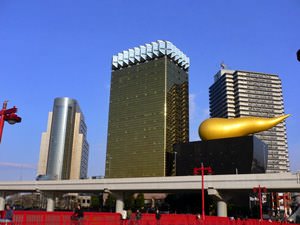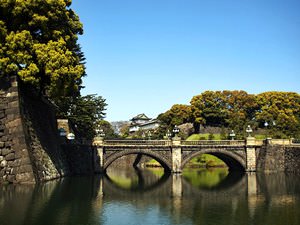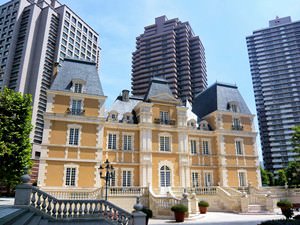
It is impossible to describe Tokyo in a few words. The capital of Japan is huge and multifaceted. On the one hand, this city is the embodiment of ancient Japanese traditions, and on the other this is a super modern business metropolis. Tokyo has grown from a small fishing village named Edo. Only several attractions from the shogun times remind of the old city. For a long time shoguns were the absolute rulers of Japan. One can feel the atmosphere of the old Tokyo in numerous palaces, temples and shrines. Fans of art and culture will be surely interested in visiting numerous magnificent museums , including, for example, the National Museum

, which exhibits the largest collection of Oriental art in the world.
Iconic The Peninsula Tokyo has become a true symbol of Tokyo. It is open in the heart of the city where it occupies a stylish 24-storey skyscraper. For many years, the hotel has severed …
Open
Japanese culture is very different from Western culture. It is multifaceted and often highly original, just like the nightlife of Tokyo, where everyone can find something to fit his/her taste - from trendy cafes and restaurants 25 to extravagant strip bars and discos . Tokyo is also internationally famous as a paradise for shoppers . In this metropolis you can buy literally everything, from the latest technological innovations to Japanese souvenirs or fashionable clothes. Tokyo can also be proud of its culinary establishments. It is nearly impossible to find a person who has never heard of the famous sushi or sashimi. However, Japanese cuisine is very diverse, and Tokyo is a great place where you can explore this culinary direction.
Sensoji Temple Sensoji Temple

in the oldest quarter of Tokyo, Asakusa, was built in 628 AD in order to store the gold statue of the bodhisattva goddess Kannon (the Goddess of Mercy). This is one of the most respected Buddhist temples. For centuries it has drawn the attention of numerous pilgrims and tourists from all over the world. Numerous believers do not even care that the temple and its five-story pagoda are just concrete copies of the original temple. It is believed that the smoke that rises from large aroma lamps set before the temple has a healing power. Copyright www.orangesmile.com
Tokyo Marriott stands out from the list of romantic hotels in Tokyo. It’s virtually an ideal place for a honeymoon or for a wedding ceremony. All guest rooms feature warm colors and …
Open
The impressive Kaminarimon Gates (the gates of thunder)

are known for their huge red paper lanterns and scary statues of the guard. The path to the temple is dotted with small shops selling traditional sweets and souvenirs. During the Edo period the center of the city (Shitamachi) was located here, and so streets, shops and restaurants, located around the church, have retained the atmosphere of the old times. Every year, on the third weekend of May Asakusa

hosts huge Sanja Festival. During this event hundreds of Mikoshi (portable Shinto shrines) are brought along the streets of the district, accompanied by a noisy and crowded festive procession.
![Robuchons restaurant - Tokyo Robuchons restaurant - Tokyo]() Meiji Temple
Meiji Temple Meiji Shinto Temple

is one of the best examples of the architecture of Shinto religion in Japan. The temple is located in the middle of a dark forest, an unexpected oasis of wild nature in the central part of the city. In order to reach the temple, visitors must pass a huge wooden tower and continue their walk in a wide pebbled path. Completed in 1920, the temple was built in honor of Emperor Meiji and Empress Shoken - during their reign Japan became a modern country, open to the world. On weekends, the territory of the temple is often occupied by traditional wedding processions. The temple also has a beautiful iris garden that is particularly beautiful in June, when irises bloom.
In Tokyo, there are several large shopping districts, and Ginza is, without a doubt, one of the oldest and most famous. First shops appeared there yet at the beginning of the 17th century. …
Open
The Imperial Palace The Imperial Palace

was built in 1590 during the reign of Ieyasu, the first shogun from the Tokugawa dynasty. For centuries, the palace was growing, steadily becoming the biggest palace in the world. The inner courtyard of the palace is open to the public only two days a year - on January 2, the New Year day, and on December 23, the birthday of the Emperor. Do not forget to pay attention to Nijibashi, a double stone arch bridge, which once was the main entrance to the palace. During the Second World War, the palace was destroyed, but later, in 1968, it was rebuilt. The walls and moats that remained from the Edo castle of the Tokugawa shogun period were integrated into the design of the present palace. Currently, the royal family still lives in the western part of the palace.
![St. Marys Cathedral, Tokyo St. Marys Cathedral, Tokyo]()
The East Garden of the Imperial Palace

is the location of an old castle of the Edo period. Many years ago the castle belonged to shoguns. Nowadays, this is the only part of the Imperial Palace that is open to public. Otemon Gates serve as the entrance to the beautiful, gently laid out garden. Centuries ago these gates were the entrance to the castle. The garden, which is partially surrounded by the former moat, is the place where inner walls and gatehouses of the castle are located. Besides this, the territory of the garden is home to a tea house, a pond and a waterfall.
Discovering the architecture of Tokyo from bird's eye view! Tokyo Tower, Metropolitan Government Building, Tokyo National Museum, Olympic Stadium, Shinjuku Park Tower, all those monuments are defining the image of Tokyo …
Open
Rainbow Town Rainbow Town is situated on a group of artificial islands in the Tokyo Bay. The islands are also known as Odaiba

. This place is often called Tokyo coast of the XXI century. This group of islands is the main point for numerous futuristic building plans. Currently, they are the location of various office complexes, parks and attractions for tourists. The architecture of Odaiba can amaze simply anyone. Fuji Television Center designed by Kenzu Tange, shopping and restaurant complex Decks Tokyo Beach, and Tokyo International Exhibition Center (Tokyo Big Sight) have become the new symbols of Tokyo. One should come to Odaiba at least to enjoy a fantastic view that opens from the fully automated monorail that leads to the island.
 It is impossible to describe Tokyo in a few words. The capital of Japan is huge and multifaceted. On the one hand, this city is the embodiment of ancient Japanese traditions, and on the other this is a super modern business metropolis. Tokyo has grown from a small fishing village named Edo. Only several attractions from the shogun times remind of the old city. For a long time shoguns were the absolute rulers of Japan. One can feel the atmosphere of the old Tokyo in numerous palaces, temples and shrines. Fans of art and culture will be surely interested in visiting numerous magnificent museums , including, for example, the National Museum
It is impossible to describe Tokyo in a few words. The capital of Japan is huge and multifaceted. On the one hand, this city is the embodiment of ancient Japanese traditions, and on the other this is a super modern business metropolis. Tokyo has grown from a small fishing village named Edo. Only several attractions from the shogun times remind of the old city. For a long time shoguns were the absolute rulers of Japan. One can feel the atmosphere of the old Tokyo in numerous palaces, temples and shrines. Fans of art and culture will be surely interested in visiting numerous magnificent museums , including, for example, the National Museum  Open
Open
 Open
Open
 Meiji Temple
Meiji Temple  Open
Open
 The East Garden of the Imperial Palace
The East Garden of the Imperial Palace  Open
Open





